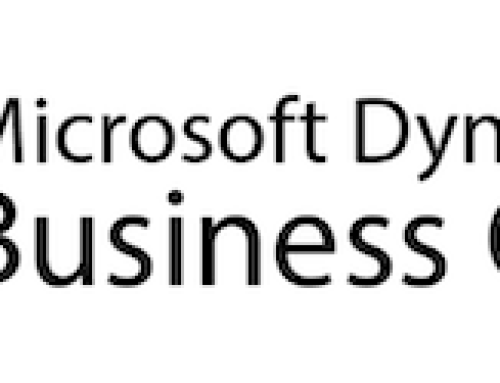You may think that General Ledger functions are pretty basic. But actually, there are a few key differences when you compare General Ledger in Acumatica versus that in Microsoft Dynamics GP.
In this series of “Advantages of Acumatica versus Dynamics GP,” we have looked at Core Financials, System-Wide Features, and Generic Inquiry vs. SmartList. Now we will dive into General Ledger.
Chart of Accounts
In Acumatica, you have the natural account number in your chart of accounts. Then sub-accounts allow you to tag any transaction where you’ve already specified the account number, with some additional level of data. This is the approach that we see in larger ERP systems. Those systems separate that sub-account structure or dimensional structure. Sometimes people refer to this as a dimension.
Dynamics GP combines your natural account number with your sub-accounts and breaks it up with segmentation. The disadvantage to a segmented full string is that you can end up with thousands of additional accounts in your target accounts. This happens because you have to create every single possible combination of all those codes and store them as an actual account in your chart of accounts.
So, the advantage of having that sub-account field separate from your natural account number, in Acumatica, is that it greatly reduces the number of accounts in your general ledger.
Reclassification
Acumatica has a reclassification functionality. Let’s say someone was to code an AP bill to the wrong GL account. To fix this in Dynamics GP, you would typically void the AP bill and re-enter. Acumatica allows the user to select a specific distribution line from a posted Journal Entry and create a Reclassification Entry. The Reclassification Entry is linked to the original entry for audit history. In Acumatica, Reclassification is a lot cleaner, neater, and has a much better audit trail.
Out of the box financial statements
For financial statements, Microsoft Dynamics GP has Management Reporter. This is a powerful tool, but you pretty much have to build your financial statements from the ground up.
Acumatica also has a custom financial report writer available that is almost identical to Management Reporter. It uses the same concept with rows and columns, and a tree or a unit set. The advantage to Acumatica is that there is a nice set of out-of-the-box financial reports that users can start with right away, or use as a basis to customize further.
Journal Entries to Cash
Acumatica’s most significant advantage in General Ledger, which is hugely helpful, is the fact that the GL and the cash modules are bi-directional. In the general ledger, when creating a journal entry that has a distribution account of cash, the released entry will automatically flow up to Acumatica’s Banking Module and be available for inquires, reporting, and reconciliation. Easy.
Some add-on tools, or even the out-of-the-box journal entry upload tools that you see in Dynamics GP are not available in the banking module.
Most companies running Dynamics GP have a long list of banking transactions to enter each month. Doing this manually is labor-intensive and not very efficient. I know that is a pain point for almost every Dynamics GP user.
Entry types
One of the advantages of keying transactions into Acumatica through the banking module is that you can have some predefined configuration done called entry types. When you pull an entry type, it will default to certain account numbers, and it will also allow you to run reporting based on those entry types. This should give you some similar term reporting capabilities. Dynamics GP does not have this.
Automatic Bank Reconciliation
In Dynamics GP, you have to buy an add-on product to auto reconcile. Acumatica has automatic bank reconciliation built into its core product. If the transaction you are importing from the bank doesn’t exist in Acumatica, it can automatically create that transaction for you, based on the intelligence that you defined. For organizations that have a lot of automatic activity happening throughout the month at the bank level, this intelligence is really helpful and streamlines the bank reconciliation process.
Assigning Customer to Payment
Sometimes on your bank statement, you will see an automatic deposit in your account, and there is no indication of who sent it. You have to do some research to find out which customer made the payment.
In Dynamics GP, you can’t record a payment unless you associate a customer with it; it is a requirement. In Acumatica, the banking module will allow you to make the deposit and record that payment so you can move forward with your bank reconciliation and then go back later to assign the customer. This may seem like a small thing, but you will find it extremely helpful. Instead of stopping the process, you can keep all of your banking activity up to date, and do the research at a more convenient time.
Centralized View
Within the banking module, Acumatica has a Cash Account Details Form, a centralized hub for viewing, creating, and reconciling. You can view what happened within a particular bank account, create transactions, even do your daily reconciliations all from that one form, in one window. Dynamics GP doesn’t have anything like that. In Dynamics GP, you have to jump around from screen to screen to perform different tasks while Acumatica has everything all in one place.
I can say that now that we use Acumatica to run our own business, even small differences in the General Ledger stand out. In my next article, I will compare Accounts Payable and Accounts Receivable functions in Acumatica versus Dynamics GP. You may think they are all the same, but just wait and see.
If you would like to compare the differences between Acumatica and Microsoft Dynamics GP for your own business, CAL Business Solutions can help.
Let’s start the conversation. Contact us online, call 860-485-0910 x4 or sales@calszone.com.
By Stacey Poll, Senior Implementation/Training Advisor, CAL Business Solutions, Acumatica, and Microsoft Dynamics GP Partner, www.calszone.com

















